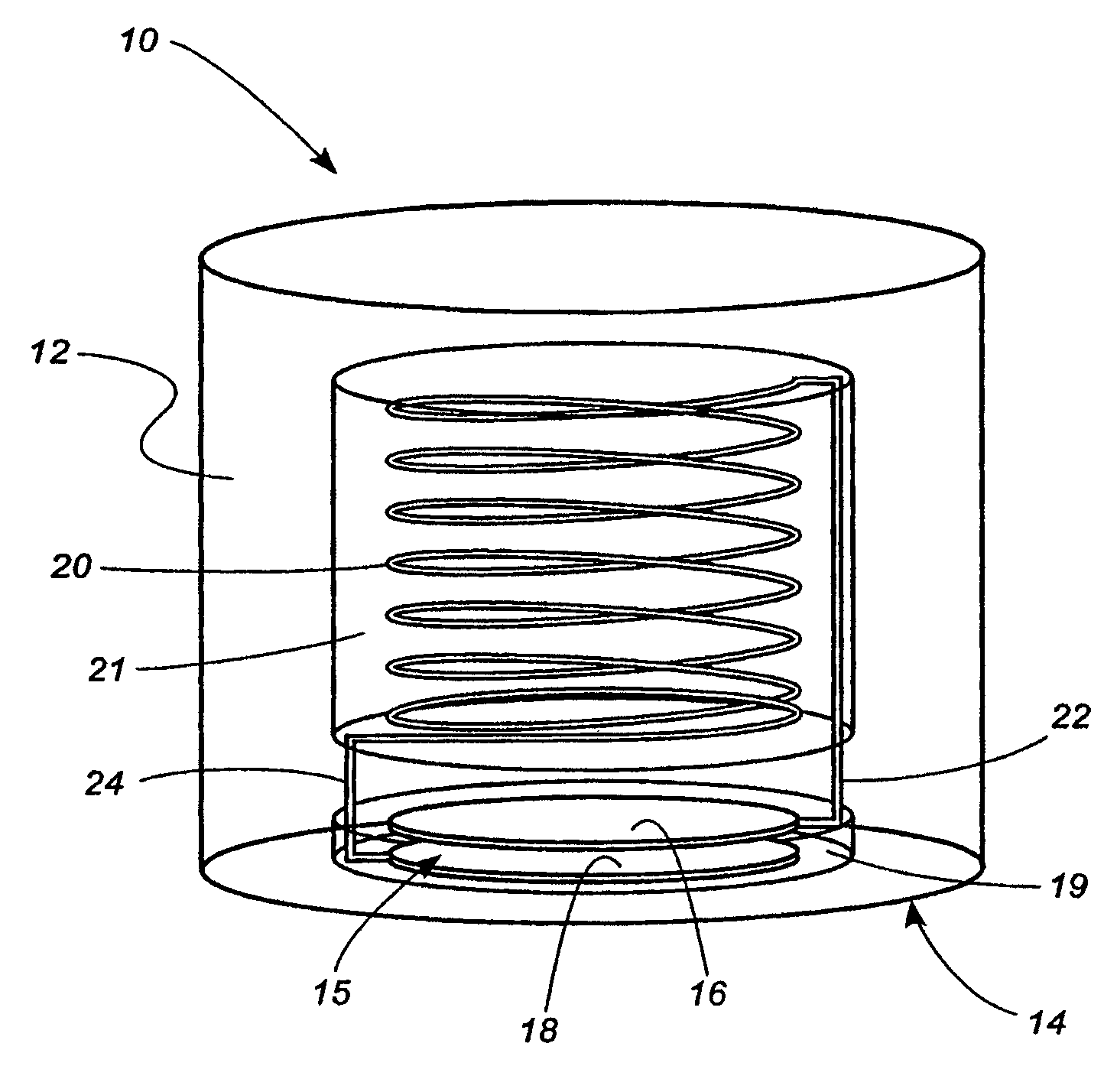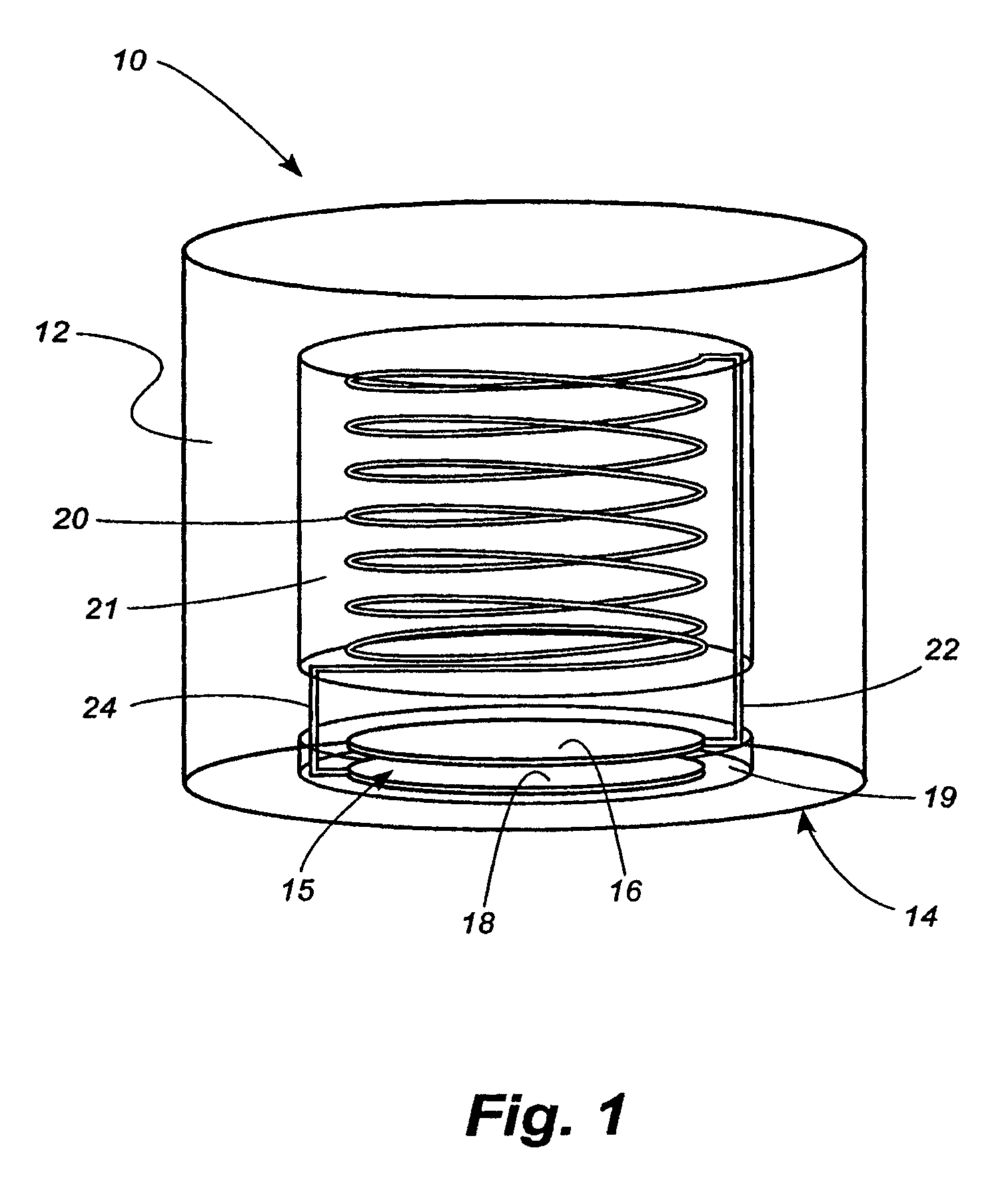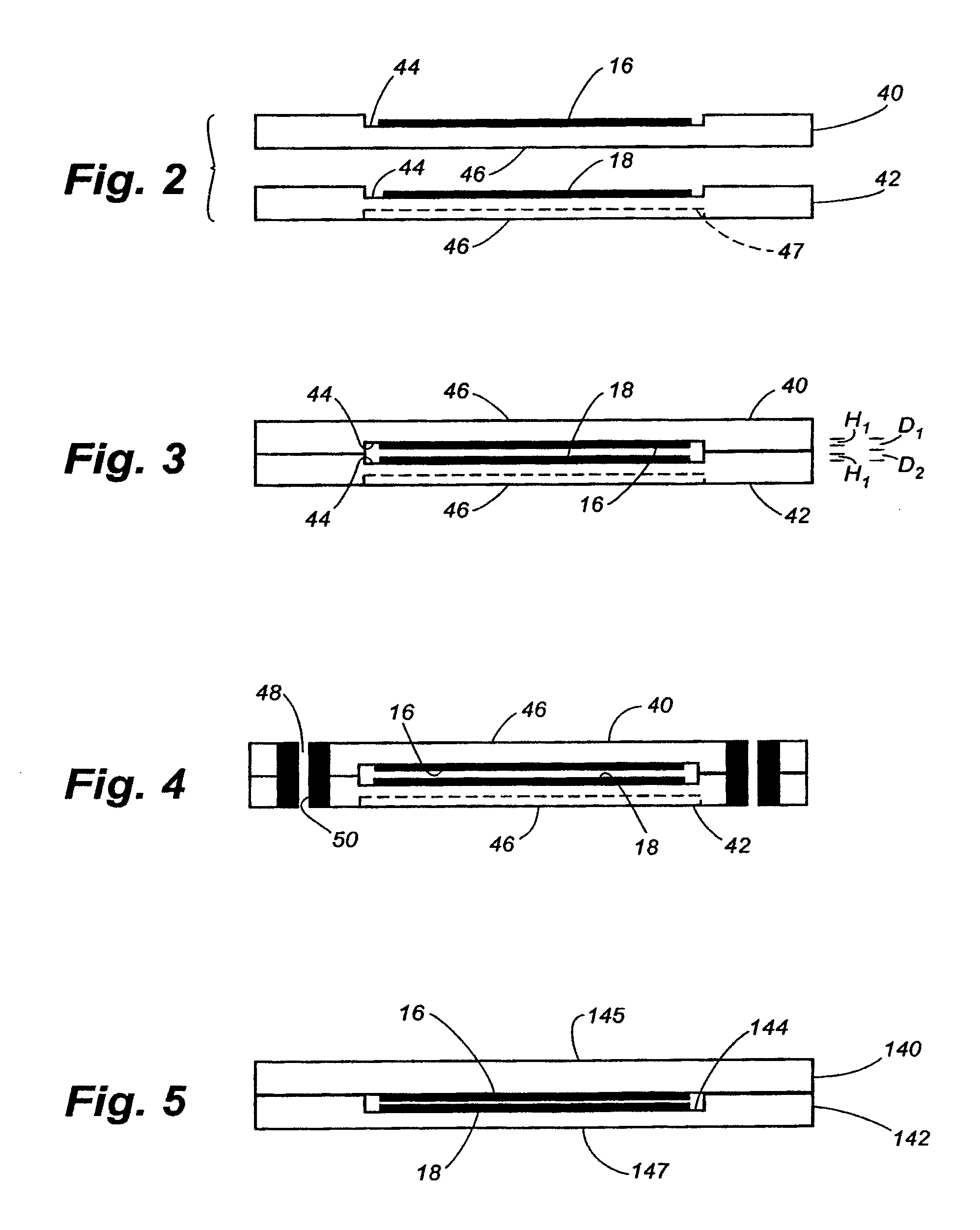Method of manufacturing implantable wireless sensor for in vivo pressure measurement
a wireless sensor and in vivo technology, applied in the field of manufacturing implanted sensors, can solve the problems of limiting the use of acute settings of sensors, the technique used to fabricate sensors does not lend itself to the miniaturization necessary, and the fabrication method used to manufacture sensors does not provide sufficient miniaturization, etc., to achieve the effect of easy, safe and accurate measurement of pressur
- Summary
- Abstract
- Description
- Claims
- Application Information
AI Technical Summary
Benefits of technology
Problems solved by technology
Method used
Image
Examples
example 1
[0122]FIG. 16 illustrates a surface micromachined, capacitor coupled sensor 600. The capacitor structure 602 comprises at least two plates 604, 606, at least one 604 of which is built directly atop a first wafer 608. This plate 604 will be referred to as the bottom plate. The region of the wafer 608 where the bottom plate 604 is built will be referred to as the deflective region 610. If necessary, the thickness of the wafer 608 in the region of the deflective region 610 can be reduced in thickness to enhance its deformability.
[0123]The other plate 606 is suspended above the bottom plate 604. The top plate 606 is mechanically anchored to the deflective region by pillar-like supporting elements 612 located at the periphery of the bottom plate 604. Bottom and top plates 604, 606 are electrically insulated and physically separated from one another by an air gap 614. The top electrode 606 mechanical design, material and dimensions are carefully chosen so that the suspended part of the el...
example 2
[0136]A variation on the two-wafer design is shown in FIGS. 24-28. A sensor 700 comprises a thick upper wafer 702 and a thinner lower wafer 704. The thin lower wafer 704 comprises the pressure-sensitive deflective region portion 706 of the sensor 700. A notch 708 is optionally formed in the upper wafer 702 to accommodate an anchor, such as a corkscrew, hook, barb, or other suitable stabilization means. The notch can be created on the backside of the wafer directly if the cap is sufficiently thick to accommodate the notch and a separation distance between the bottom of the notch and the coil body without causing any parasitic, deleterious electromagnetic or mechanical effects on the sensor function. Alternatively, the notch can be created by using wet or dry methods in a separate wafer or plurality of wafers and then bonded to the backside of the sensor. The notch can have a variety of regular or irregular geometries and can have rough or smooth sidewalls—any configuration achievable...
example 3
[0143]FIGS. 29-32 depict an embodiment of a sensor 800 manufactured from four stacked wafers, 802, 804, 806, and 808. The bottom wafer 802 comprises the pressure-sensitive deflective region 810 and a pair of capacitor plates 812, 814 formed on its upper surface. The second wafer 804 comprises a capacitor plate 816 formed on its lower surface and a pair of through-holes 818 for electrical connections. The third wafer 806 comprises a cylindrical cavity 820 for accommodating an inductance coil 822. Leads 824 of the inductance coil 822 extend through the holes 818 in the second wafer 804 and connect to the capacitor plates 812, 814. The fourth wafer 808 fits atop the third wafer to provide a sealed structure.
[0144]FIG. 30 illustrates a first step in the process for manufacturing the sensor 800. A recess 830 is formed in the upper surface of the bottom wafer. Then, as shown in FIG. 32, the plates 812, 814 are formed in the base of the recess 830. Referring to FIG. 32, the plate 816 is fo...
PUM
| Property | Measurement | Unit |
|---|---|---|
| distance | aaaaa | aaaaa |
| distance | aaaaa | aaaaa |
| peak wavelength | aaaaa | aaaaa |
Abstract
Description
Claims
Application Information
 Login to View More
Login to View More - R&D
- Intellectual Property
- Life Sciences
- Materials
- Tech Scout
- Unparalleled Data Quality
- Higher Quality Content
- 60% Fewer Hallucinations
Browse by: Latest US Patents, China's latest patents, Technical Efficacy Thesaurus, Application Domain, Technology Topic, Popular Technical Reports.
© 2025 PatSnap. All rights reserved.Legal|Privacy policy|Modern Slavery Act Transparency Statement|Sitemap|About US| Contact US: help@patsnap.com



